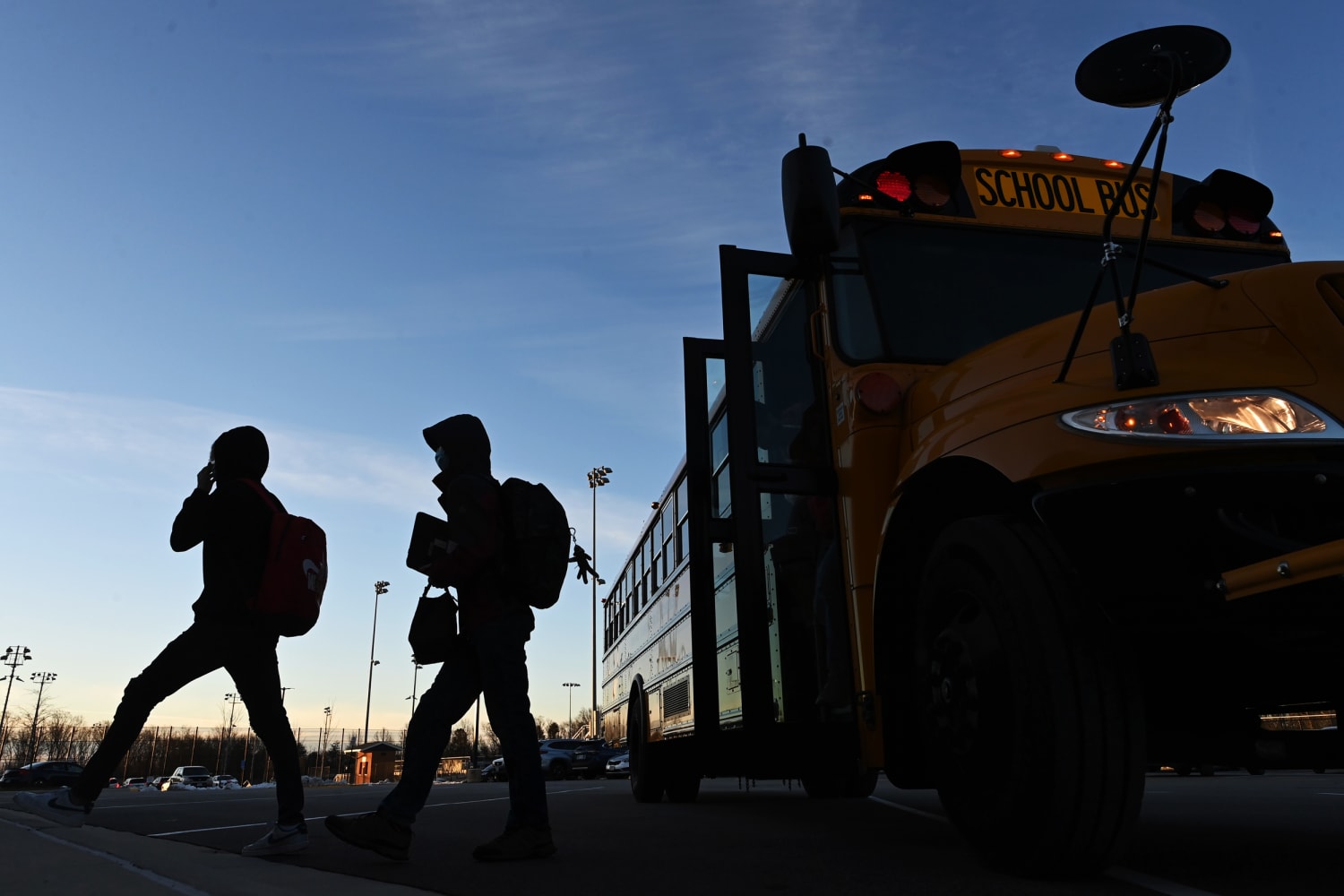
Children might start going to school in darkness next year in exchange for more sun later in the day, while their parents commute home from work with the benefit of light.
Those would be among the impacts of ditching standard time and adopting year-round daylight saving time, a change in legislation the Senate passed this week with virtually no opposition.
If the Sunshine Protection Act, as written, were to gain House approval and President Joe Biden’s signature, Americans would fall back this November, spring forward in March 2023 and then never change their clocks again.
After nearly all Americans set their clocks back on Nov. 7 to usher in standard time, the sun came up over New York City at 6:33 a.m. ET and set at 4:45 p.m. On the last day of standard time on Saturday, the sun rose and set over the city at 6:12 a.m. and 5:59 p.m., respectively.
Keeping daylight saving time through those fall and winter months would push sunrise an hour later, meaning early risers and children who head to school around 7 a.m. would do so as the sun still slumbers.
But eight-plus hours after that, much of the evening rush would unfold with the sun in the sky until closer to 6 or 7 p.m.
Sen. Marco Rubio, R-Fla., one of the bipartisan bill’s main backers, said he would expect year-round daylight saving time to reduce crime with later hours of sunshine, decrease child obesity by encouraging kids to play later into the day and put a dent in seasonal depression rates.
“I know this is not the most important issue confronting America, but it’s one of those issues where there’s a lot of agreement,” Rubio said on the Senate floor Tuesday. “And I think a lot of people wonder why it took so long to get here.”
The potential change could have far-reaching implications in many facets of American life, affecting education, transportation, health and even weather reports on the evening news.
Health and sleep
Among the most ardent opponents of year-round daylight saving time are doctors and researchers with the American Academy of Sleep Medicine.
Sunlight activates key hormones that fuel a person’s activities for the day, and the earlier that process starts the better, according to advocates for standard time. And melatonin, which is key to falling asleep, is triggered after the sun sets, so the earlier that happens, the longer the runway toward a good night of shuteye.
“Going to daylight saving time year-round is a really bad idea,” said Dr. Nathaniel F. Watson, a spokesman for the sleep academy who is a neurologist at the University of Washington Medicine Sleep Center. “If we do this, it’s essentially dosing the entire United States with jet lag — permanent jet lag.”
Watson said his ideal would be permanent standard time but that changing the clock every spring and fall would still be better than year-round daylight saving time.
Still, the act of shifting between standard and daylight saving times is linked to a variety of negative health outcomes, according to a 2020 study, including higher rates of heart disease and more traffic accidents. So eliminating the practice of changing clocks might at least alleviate those risks.
Education
Despite its potential impact on school systems, the bill caught some education stakeholders by surprise.
Eric Runez, the head of the DeForest Area School District in Wisconsin and an executive board member of the American Association of School Administrators, said lawmakers had not consulted his group and other education policy institutions about the issue recently.
Runez said he worries about early morning transportation issues.
“That’s going to be a pretty dark environment, kids waiting in the dark for bus pickups or walking,” he said. “There are safety concerns around that.”
For much of January and December in Runez’s district near Madison, the sun already does not come up until 7:30 a.m., which puts children on the streets just before sunrise. It would be even darker with year-round daylight saving time.
Seattle offers an even more extreme example, because the latest sunrises there come a few minutes shy of 8 a.m. Under the new bill, the sun wouldn’t rise until nearly 9.
Road safety
The Institute for Highway Safety, which is funded by insurance companies, has long advocated for year-round daylight saving time.
The group asserts that more lives, particularly those of pedestrians, would be saved with better lighting in heavy rush-hour times.
“This would have a benefit for highway safety — this is something we hope decision-makers will keep in mind,” spokesman Joseph Young said.
Weather data
Offices of the National Weather Service across the U.S. release balloons into the atmosphere at 8 a.m. and 8 p.m. every day during daylight saving time and at 7 a.m. and p.m. during standard time.
Data from those balloons are the basis of nearly every weather report read online or presented on television.
So if that 8 a.m. and 8 p.m. standard sticks, forecast data would come in later. That, in turn, could affect people’s decisions about whether to pack umbrellas or how they assess the likelihood that their children’s Little League games will go ahead.
Been there, done that
The U.S. adopted year-round daylight saving time once before, in 1974-75. But the change was repealed, largely because of parental concerns about schools’ operating before sunrise.
“We tried it before in the mid-’70s during the OPEC oil embargo, and people in the United States did not like it,” Watson said. “We’ve been here before, and we know it doesn’t work.”
He added, “Standard time is the time that best aligns your body clock with the sun clock, which is the way we’ve lived for millennia.”
Source: | This article originally belongs to Nbcnews.com










